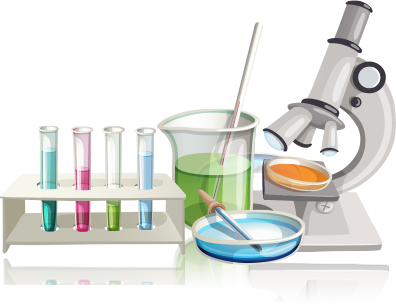Have you ever noticed the wetness that forms on the outside of a cold glass or can of soda? Where do you think that moisture comes from? Try this experiment to see if you can figure it out!
Here's what to do:
- Put ice cubes into two clear plastic cups until they are about ½-full.
- Pour cold water into both cups so they are each about ¾-full.
- Quickly place one of the cups in a zip-closing plastic bag. Try to get as much air out as you can and then close the bag securely.
You should have two identical cups of ice and water. One cup should be exposed to the air and the other should be in a bag, not exposed to the air.
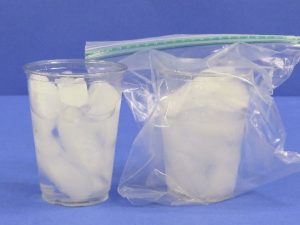
- Ask your adult partner to use scissors to cut the coffee filter into two equal-size pieces.
- Rub one piece of the coffee filter on the outside of the cup that has been exposed to the air. Check the paper to see if it looks wet. What do you notice?
- Now rub the other piece of coffee filter on the outside of the cup that has been in the bag and not exposed to the air. Check the paper to see if it looks wet. What do you notice?
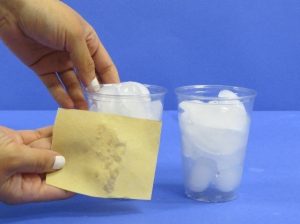
What to expect
There should be moisture on the outside of the cup that was exposed to the air and much less moisture on the outside of the cup that was in the bag.
What's happening in there?
Most air, except for in very dry places, has water molecules mixed in with the other molecules that make up the air. When water molecules in the air get cold, they slow down, join together, and become tiny drops of liquid water. This process is called condensation. This is what happens when water molecules in the air touch the outside of the cold cup that is exposed to air. Not much air touches the cup in the bag so not much moisture can form on it.
What else could you try?
If the air around you doesn’t have enough water vapor in it to cause moisture to form on the outside of a cold cup, here’s another way to see how condensation happens.
What you'll need:
- 2 wide clear plastic cups
- 2 tall clear plastic cups
- hot tap water
- piece of ice
- magnifier
Be safe
Be sure to review the safety instructions on page 1 before proceeding.
Here's what to do:
- Fill two wide cups about 2/3 full of hot tap water.
- Quickly place a tall clear plastic cup over each of the cups.
- Place a piece of ice on the top of one of the cups and wait about 2-3 minutes.
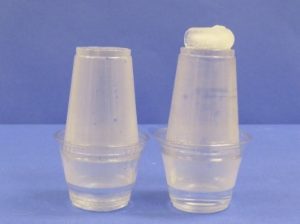
- After the ice has been on the cup for 2-3 minutes, remove it and use a paper towel to dry off the water from the melted ice.
- Look closely at the top of each cup. Use a magnifier if you have one. What do you notice?
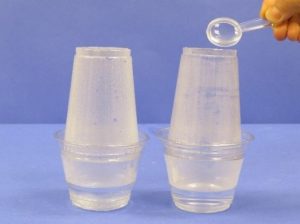
What to expect
The inside top surface of the cup with the ice should have more and bigger water drops on it than the top inside surface of the cup without the ice.
What's happening in there?
The inside of each cup should have a lot of water vapor in it from the evaporating hot water. That water vapor will condense into liquid water when it touches the cooler surface of the upper cup. But it will condense even faster if the surface is even colder because of the ice.
Think about this …
Water evaporates all the time from oceans, lakes, rivers, and other bodies of water. What do you think happens when the water vapor gets high into the sky and meets colder air?
